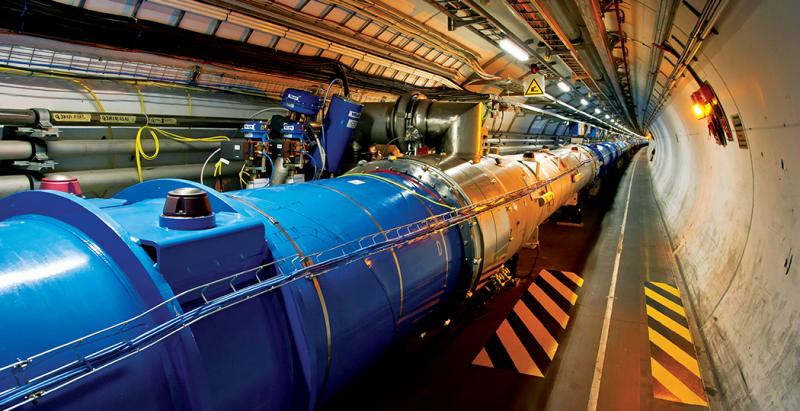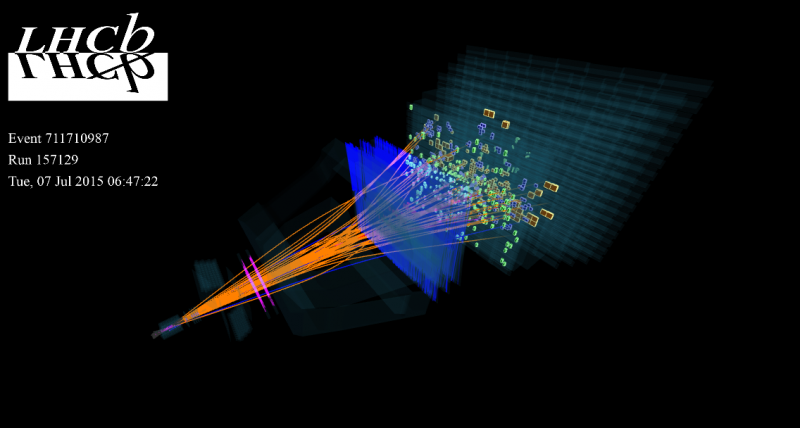The Large Hadron Collider
The Large Hadron Collider
The Large Hadron Collider (LHC) is the world’s largest and most powerful particle accelerator. It first started up on 10 September 2008, and remains the latest addition to CERN’s accelerator complex. The LHC consists of a 27-kilometre ring of superconducting magnets with a number of accelerating structures to boost the energy of the particles along the way.
Inside the accelerator, two high-energy particle beams travel at close to the speed of light before they are made to collide. The beams travel in opposite directions in separate beam pipes – two tubes kept at ultrahigh vacuum. They are guided around the accelerator ring by a strong magnetic field maintained by superconducting electromagnets. The electromagnets are built from coils of special electric cable that operates in a superconducting state, efficiently conducting electricity without resistance or loss of energy. This requires chilling the magnets to ‑271.3°C – a temperature colder than outer space. For this reason, much of the accelerator is connected to a distribution system of liquid helium, which cools the magnets, as well as to other supply services.

LHC back in collision mode

Tuesday, 7 July: a proton-proton collision leaves multiple tracks in the different layers of the CMS detector. (Image: CMS)
All systems are go once again for physics at the Large Hadron Collider (LHC).
On Saturday evening proton collisions resumed at the world’s most
powerful accelerator and the experiments began collecting data once
more. At present, 152 bunches of protons are circulating in each
direction in the 27 kilometre machine, but the goal is to increase the
number of protons over the next two weeks to close to 1000 bunches per
beam.For several days, the LHC had temporarily halted data collection to “chase” electron clouds out of its beam pipes. These electrons, generated in cascades, destabilise the beam and compromise the operation of the accelerator at high intensity, i.e. at more than 1000 bunches per beam. The cleaning operation was successful, since the operators succeeded in circulating up to 1200 proton bunches in each beam at the LHC’s injection energy, 450 gigaelectronvolts (GeV). This phase allowed the electron clouds to be dissipated and the beam stability to be improved. Since Friday, the LHC has been back in operation at its nominal collision energy of 13 teraelectronvolts (TeV). The operators can now increase the number of bunches circulating in the machine, spaced apart by 50 nanoseconds.
The LHC experiments will continue to collect data until the end of July. A new cleaning phase is then scheduled to allow the beam intensity to be increased even further by reducing the amount of space between the bunches by 50%.

 An image of a proton-proton collision taken in the LHCb detector on Tuesday 7 July. (Image: LHCb
An image of a proton-proton collision taken in the LHCb detector on Tuesday 7 July. (Image: LHCb
Comments
Post a Comment